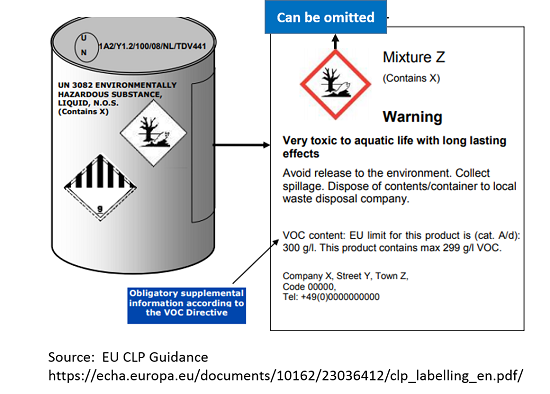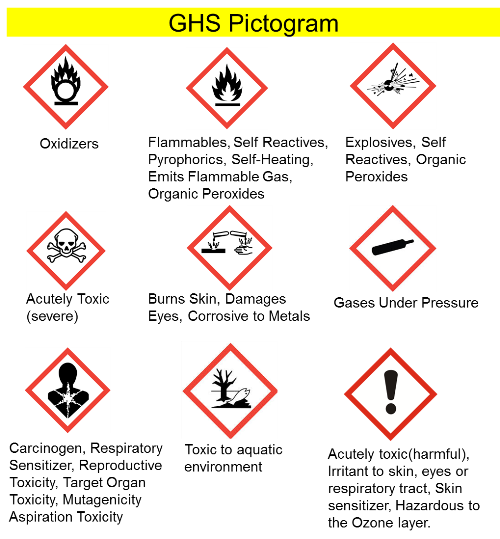Comparison of GHS Labels and Dangerous Goods Labels
Little Pro on 2019-09-16
Many people are confused about the differences between GHS labels and dangerous goods labels and do not understand when and where to place those labels. In this article, we will give you a detailed comparison.
Legal Basis
GHS labels are usually required by chemical hazard communication regulations or occupational health and safety regulations. Those regulations are often based on the Globally Harmonized System of Classification and Labelling of Chemicals (GHS). The primary purpose of GHS labels is to communicate chemical hazards to workers or recipients through signal words, pictograms, hazard statements and precautionary statements.
Dangerous goods labels are usually required by dangerous goods transport regulations such as IMDG Code, IATA, and ADR. Those regulations are based on the UN Recommendations on the Transport of Dangerous Goods Model Regulations. The primary purpose of DG labels is to ensure the safe transport of dangerous goods by via various modes (air, sea or road) by informing shipper and operators of the classification of transported goods.
Applicable Scope
GHS labels only apply to hazardous chemicals (i.e, chemical substances or mixtures meeting GHS hazard classification criteria). Dangerous goods labels not only apply to hazardous chemicals on dangerous goods list or meeting dangerous goods classification criteria, but also apply to articles (i.e, lithium batteries, airbags) belonging to dangerous goods.
All hazardous chemicals require GHS labels, but not all hazardous chemicals (i.e, chemicals with only chronic health hazards) require dangerous goods labels. There are some correlations between GHS hazard categories and dangerous goods categories. More info can be found below.
Appearance
GHS uses 9 red diamond-shaped pictograms to represent various kinds of chemical hazards.
Dangerous goods regulations use a lot more symbols and colors to represent 9 classes of dangerous goods. For example, there are 4 possible symbols for Class 4 dangerous goods.
You may click the picture below to view complete symbols.
Size
Many countries have set GHS label requirements on sizes for chemical packages with different packaging capacities. Some countries have even set additional requirements on GHS label pictogram size and even font size.
Under TDG regulations, there are also requirements on the minimum dimension of hazard labels. (i.e, 100mm x100mm for >25kg packages). This size is usually much bigger than the size of a GHS pictogram.
Where to Place GHS Labels and Dangerous Goods Labels
Dangerous labels are usually placed on the outer packagings. A hazardous chemical product may be packaged in multi-layer packages in which case inner packages need to be labelled according to GHS while the outer packaging shall meet the labelling provisions of TDG. Outer packages may also be labelled according to GHS (This is mandatory for single packagings such as drum).
Where the GHS hazard pictogram(s) relate to the same hazard as dangerous goods hazard label, the GHS pictogram(s) need not appear on the outer packaging. For example, the red diamond-shaped GHS pictogram (dead fish) below can be omitted from outer packging because the black dangerous goods label (dead fish) on the outer packaging conveys the same hazards.

More readings
- GHS Label Examples
- Marking and Labelling of Dangerous Goods
- Global GHS Label Requirement for Small Containers
- US NFPA Ratings
Having Questions?
We do not provide consultancy services. If you have questions or need any help, please contact our sponsor. You may also find an expert in CSP business directory below. If you are a consultant, you may get yourself listed in CSP business directory (free) or sponsor this page to leave your contact info on this page..

Tags: Topics - TDG, GHS SDS and Labelling

